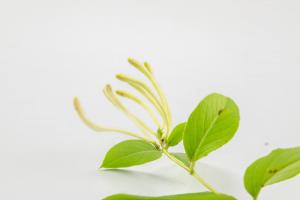Blue snowflake
In summer, except Hydrangea, flower's favorite blue flower is blue snowflake! In such hot weather in summer, you don't have to turn on the air conditioner to have a basin of cool blue snowflakes

Operation steps:
1. Usually, when pruning the branches of blue snowflakes, the pruned branches can be cut. Trim off the bottom branches, leaving 3-5cm smooth stems, and leave branches and leaves in the upper part
2. Prepare a disposable paper cup, poke several holes in the bottom of the cup, then fill the cup with vermiculite, insert the branches of blue snowflakes into the cup, put a tray with water at the bottom, and put it in a place with good scattered light to wait for rooting
3. The temperature is high in summer. It only takes about 10-20 days to see the blue snowflakes growing white roots
4. After rooting, transplant blue snow into a pot. First relax in the shade for a week, and then put it in a place with good light. With heavy water and sun, the blue snow will soon burst into a basin
Rose
The roses on the edge of the green belt in summer are blooming very well. Every time after work, Huahua can't help but want to pick a few branches home. Finally, she secretly picked two branches yesterday. She is really happy

Operation steps:
1. When cutting rose branches from the roadside, it's best to choose those robust semi lignified branches. It's better if they are flowering branches, because the flowering branches have more nutrient accumulation and higher rooting rate! The lower end can be cut into horseshoe shape
2. Generally, only 3-4 leaves are left for photosynthesis, and the rest are cut off to avoid unnecessary nutrient consumption
3. Soak the pruned rose branches in carbendazim or potassium permanganate solution for more than 20 minutes to achieve the purpose of sterilization and disinfection, and then take them out and dry the wound in a cool place
4. Prepare the matrix for cutting. Peat, vermiculite and perlite can be used to form nutritious soil in the ratio of 1:1:1, which can be put in a disposable paper cup, and then the rose branches dried in the air can be obliquely inserted into the soil and placed in a cool and ventilated place
5. In summer, the temperature is high, and the survival rate of cutting is greatly improved. It only takes about 10-20 days, and the cutting rose can take root
6. If you have pure sand flower friends at home, you can also choose to use sand or sponge cutting, and the rooting rate is also very high
7. After the Rose takes root, it only takes one month to see that the root system is full of disposable paper cups. At this time, pour the whole rose out of the cup, prepare loose and breathable nutrient soil and replace it in a large basin
Hydrangea
Speaking of the recent super hot flowers, the first choice must be Hydrangea! As the flower you want to raise most in summer, don't you want to take advantage of cutting now and have more hydrangeas bloom next year

Operation steps:
1. Now is a good time for Hydrangea cutting. In particular, many flower friends' Hydrangea have failed. Cutting off the failed residual flowers and branches is the fastest way to take root
2. Trim the post flowering branches slightly, cut the lower end into an inclined plane with a sharp knife, and keep half of the upper leaf to prevent excessive nutrient consumption. You can wipe some rooting powder on the bottom of Hydrangea branches, and then put them in a cool and ventilated place to dry the wound
3. Prepare a disposable paper cup, punch a hole at the bottom of the paper cup, configure perlite and vermiculite in the ratio of 1:1, then insert the trimmed Hydrangea branches into the disposable paper cup, and then put the paper cup into the tray with water
4, put the cuttings on the spot with good scattering light, and regularly spray to ensure the humidity. It only takes about 20 days to see the cuttings of the hydrangea rooting. p>
5. Transplant the rooted Hydrangea branches into the flower pot. First put it in a cool and ventilated place for a week, and then put it in a place with bright scattered light for maintenance. As long as you keep it well, you can make Hydrangea bloom next year
Triangle plum
As a northerner, Huahua super envies the patches of triangular plum on the South roadside. After all, every time it blooms, it is a flower wall, which makes Huahua really envy, envy and hate

Operation steps:
1. If you meet a plum tree on the roadside, you can cut a strong branch and bring it back. You can cut it directly at home and trim it a little, 7-10CM in each section
2. Soak the branches of Prunus deltoides in carbendazim solution for 3-5 hours to improve the rooting rate
3. Mix the rooting powder prepared in advance with the yellow mud and knead it into a yellow mud block, then insert the branch of triangular plum into the yellow mud block for 2-3cm, and then wrap the lower end of the branch of triangular plum with the yellow mud block with toilet paper
4. Put the treated branches of triangle plum into the plastic bucket. In order to ensure the humidity, you can find a plastic bag and wrap the whole plastic bucket
5. The rooting powder and potassium dihydrogen phosphate can be configured into a solution in the ratio of 1:1, and then sprayed on the leaves of Prunus tridentatus. It only takes about 20 days, and the cutted Prunus tridentatus can take root
6. After rooting, transplant the triangle plum together with the yellow mud into a large basin. The big pot is prepared with loose and breathable soil. After transplanting, put it in the shade for a week, and then transfer it to the sun. Soon, the triangle plum will grow and flourish
Milan
Summer is the best time to keep pots at home. Although the flowers are small, each time they bloom, they are a large area. Put a pot in the house, and the aroma will not disperse for a long time. It smells super good

Operation steps:
1. After pruning each branch, it can be cut from 8-5 cm strong branches
2. Mix the rooting powder 100 times with water to form a rooting agent, then soak the pruned Milan branches in rooting water for 10-20 minutes, then take them out, wash them with water and dry them in the shade
3. Prepare clean plastic bottles or disposable cups, configure peat soil and vermiculite into nutrient soil in the ratio of 1:1, and then insert the dried Milan branches directly into the soil
4. Milan cuttings take root very slowly. Although the temperature is high in summer, it also takes 2-3 months to take root. Therefore, flower friends must be patient and don't often pull out the branches to see if they take root
5. Put the rooted Milan on the pot. After you put it in the basin, put it in a cool and ventilated place for 1-2 weeks, and then transfer to the sun to get more sun, and you will soon grow up
Camellia
A few days ago, some flower friends asked Huahua, can you still cut Camellia in such hot weather? Huahua tells you: of course

Operation steps:
1. From Camellia plants, select robust semi lignified branches. The so-called semi lignified branches are the new branches that just grew in those years. When they turn brown from green, the branches at this time are the most suitable for cutting
2. Trim the cut semi lignified branches slightly, keep 1-2 leaves for each branch, cut off the other leaves, and then soak them in rooting powder solution for 1 hour, and then dry the wound in a cool and ventilated place
3. The yellow mud and river sand shall be configured into the soil required for cutting according to the ratio of 2:1. After watering for one time, the camellia branches shall be inserted into the soil, and then placed in a cool and ventilated place
4. It only takes about 20 days for the cuttings of Camellia branches to take root! After rooting, transplant into a pot
In fact, in addition to what Huahua introduced
Like cuckoo, Fusang
All can be cut in summer
You flower friends, why don't you try it in the summer

 how many times do yo...
how many times do yo... how many planted tre...
how many planted tre... how many pine trees ...
how many pine trees ... how many pecan trees...
how many pecan trees... how many plants comp...
how many plants comp... how many plants can ...
how many plants can ... how many plants and ...
how many plants and ... how many pepper plan...
how many pepper plan...






























